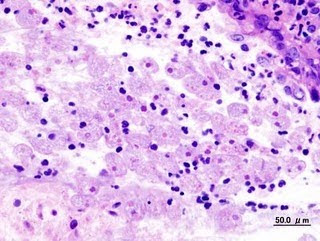
Amoebic Dysentery
Greek word Amoeba means change, as amoebae constantly changes its shape, and dys means abnormal or painful and enteran means intestine so loose motions along with abdominal cramps is known as amoebic dysentery.
Cause: Entaemaeba histolitica is a causative organism, it is a parasite which can live in human body without making any pathology or it can make a person very sick by going into the heart or liver.
Cysts of E.histolytica survive well outside the body are ingested in water or uncooked food which has been contaminated by human feces. In the colon the vegetative forms “Trophozoites” emerge from the cysts. While they remain free in the colon, the condition is symptomless but under certain circumstances invasion and ulceration of the mucous membrane the large bowel takes place causing the symptoms of amoebic dysentery. The lesions are usually maximal in the caecum. Tiny elevations are produced in the mucosa. These soon breakdown, producing flask shaped ulcers varying greatly in size and surrounded by healthy mucosa. Amoebae may find their way into a vein and be carried to the liver where they multiply and cause hepatocellular necrosis (Amoebic abscess).
According to Ayurveda: Dysentery is known as Pravahika. Continuous consumption of indigestable food i.e. Oily, heavy, dry and cold, food, including the Aguntaja cause (according to modern science Amoebae) cause vitiation of vata and kapha. Colon is the seat of vata so vitiated vata causes disturbance in colon with cramps (grumbling pain) and vitiated kapha causes sroto avarodha (blockage of channels) therefore colon becomes weak and cannot digest and absorb the food properly and produces more mucus leads to Pravahika.
Clinical Features: It runs a chronic course with grumbling pains in the abdomen and two or more rather loose stools a day. Periods of diarrhea alternating with constipation are a frequent feature. Mucus is usually passed, sometimes with streaks of blood and the motions often have a very offensive odour.
Treatment-Symptomatic cases can be treated with antimicrobial drugs but the most severe cases treatment has to be given
• Antimicrobial drugs
• Antispasmodic
• Antibiotic
Ayurvedic Treatment: Langhana i.e. light food has to be taken patient should take only liquid cooked diet.
1) Medicines which improves the digestion. (Deepana and Pachana)
2) Other medicines which are highly effective against disease for example
• Kutajarishtam
• Mustharishtam
• Vilwadi leham
• Dadimashtak choornam
• Talisapatradi Vataka
Prevention:
• Unboiled water
• Uncooked food
• Heavy, dry, oily food.

